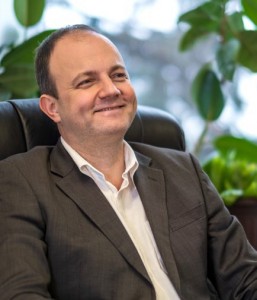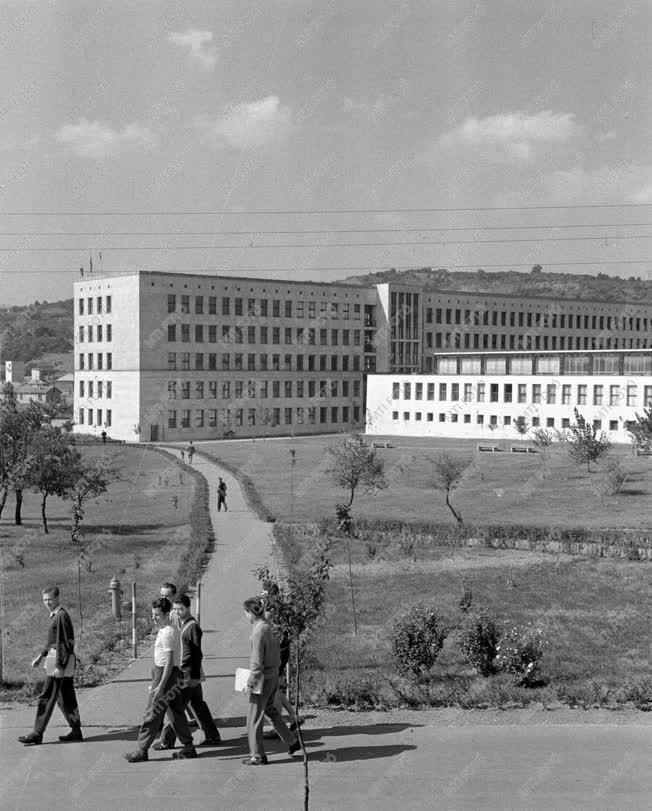
I am honoured to greet you in the name of the Faculty of Earth Science and Engineering. You surely already know that the history of the Faculty reaches back nearly 300 years. This in itself shows that there has been, is, and will continue to be a constant need for experts in our multifaceted discipline. Without continual development, this would not be possible. We all know that growing economies mean a greater need for the world’s raw materials, for energy and for water, and the sustainable production of these natural resources is our task.
This sector is undergoing major changes to meet changing circumstances and emerging needs of industry. Different approaches are demanded to mining. Global challenges are facing all experts, facing us and our graduates, including technologies for low CO2 emissions, the cycle economy, water as a resource, exploration and utilisation of geothermal energy, geoinformatics, new methods in raw materials exploration (both geological and geophysical), supply of strategic materials to high-tech industries, utilising materials in waste, modern raw material processing technologies, more environmentally friendly methods for mining and for the exploration and exploitation of non-conventional fossil fuels, sustainable soil management, and the effects of all of these on society and the natural environment.
Expanding and strengthening our international network is an important part of our teaching and research activities. Thanks to our international partners, our students can study in scholarship programmes abroad, and some have the opportunities to do the research for their thesis in international firms. Modern infrastructure supports our education and research. In addition to teaching, another priority is to make effective use of our research, development and innovation capabilities in grant-funded projects and in industry as well. This is seen in our particularly high participation rate in EU-funded Horizon 2020 projects and within the EIT KIC Raw Materials project; in recent years we have been awarded nearly two dozen international projects. We have also been active in serving the needs of entrepreneurial innovation through Hungarian operative research programmes.
Prof. Gábor Mucsi
Dean
HISTORY OF THE FACULTY

The Faculty of Earth Science and Engineering’s history and operation has roots that lead back to 1735, when the world’s first mining school (Bergschule) was established in Selmecbánya (known as Schemnitz at the time, and now Banská Štiavnica). The imperial institution was created within the territory of the Hungarian Kingdom to train technical and legal experts in the fields of mining and metallurgy. The first teacher was Sámuel Mikoviny, a Renaissance man and the greatest engineer of his time.
On October 22, 1762, Maria Theresa decreed the advancement of the institution’s academic status. In 1763 the Department of Mineralogical, Chemical and Metallurgical Studies was formed under the leadership of Nikolaus Joseph Jacquin. A second professorship was added in 1765 for instruction in mathematics, physics and mechanics and machinery, and in 1770 the structure and operation of the Mining Academy (Academia Montanistica, Bergakademie) was approved by Empress Maria Theresa herself. The three-year course was taught in German.
After 1770 the Selmec academy became one of the European centers of mining and metallurgical sciences. The academy was sought out by many experts and potential students from different nations, who spent various periods of time at the institution attending lectures and working in the laboratories. In 1808 a forestry school was formed in Selmecbánya, led by Heinrich David Wilckens, which merged with the Mining Academy in 1846, leading to the new name of Mining and Forestry Academy (K. K. Berg- und Forstakademie).
Due to growing ethnic tensions among the students in 1848-1849 some students from Austria, Bohemia and Moravia left Selmec. Institutions were founded in Leoben for the native German- speaking students and in Příbram for the others; these institutions were later promoted to academies. With the Austro-Hungarian Compromise in 1867 the academy became a Hungarian state institution called the Hungarian Royal Academy of Mining and Forestry (Magyar Királyi Bányászati és Erdészeti Akadémia). Hungarian was gradually introduced as the language of instruction between 1868 and 1872.
Up to 1872 the ‘mining’ course – in the professional language of the time this covered instruction in mining, metallurgy and minting – was followed by all students, but in that year it was divided into four branches: mining, ferrous metallurgy, non-ferrous metallurgy, and machinery and civil engineering. Training in forestry had two branches: general forestry and forest engineering. From 1904 the academy operated under the name of the College of Mining and Forestry (Bányászati és Erdészeti Főiskola).
In 1919, after Selmecbánya became part of the newly formed Czechoslovakia, the College moved its equipment, staff and students to Sopron, led by the rector, the mining Professor Géza Réz. In 1922 the institution became the College of Mining Engineering and Forest Engineering (Bányamérnöki és Erdő- mérnöki Főiskola).
The college lost its independence in 1934, when it was merged into the newly organised national József Nádor University of Engineering and Economics as its Faculty of Mining, Metallurgical and Forestry Engineering, with 27 departments. In 1949, together with the Mining and Metallurgy faculties in Sopron, a new Faculty of Mechanical Engineering was founded in Miskolc to establish the Technical University for Heavy Industry (Nehézipari Műszaki Egyetem). Until 1959 the first two years were taught in Miskolc, while the upper years received their training in Sopron. Due to the changing needs in mining, the unified mining course was divided in 1948 into programmes of mining, drilling and mine exploration (geology/geophysics) engineering, and later mine equipment engineering, while a survey engineering program also existed for a short time.
Due to the ongoing technical and economic changes and yielding to professional and academic friction in the faculty, a revised curriculum was established in 1992, with new programs in environmental engineering, process engineering, and later hydrogeology. Reflecting the transformation in its areas of teaching and research, the name of the faculty was changed to the Faculty of Earth Science and Engineering (Műszaki Földtudományi Kar) on 1 January 2000.


